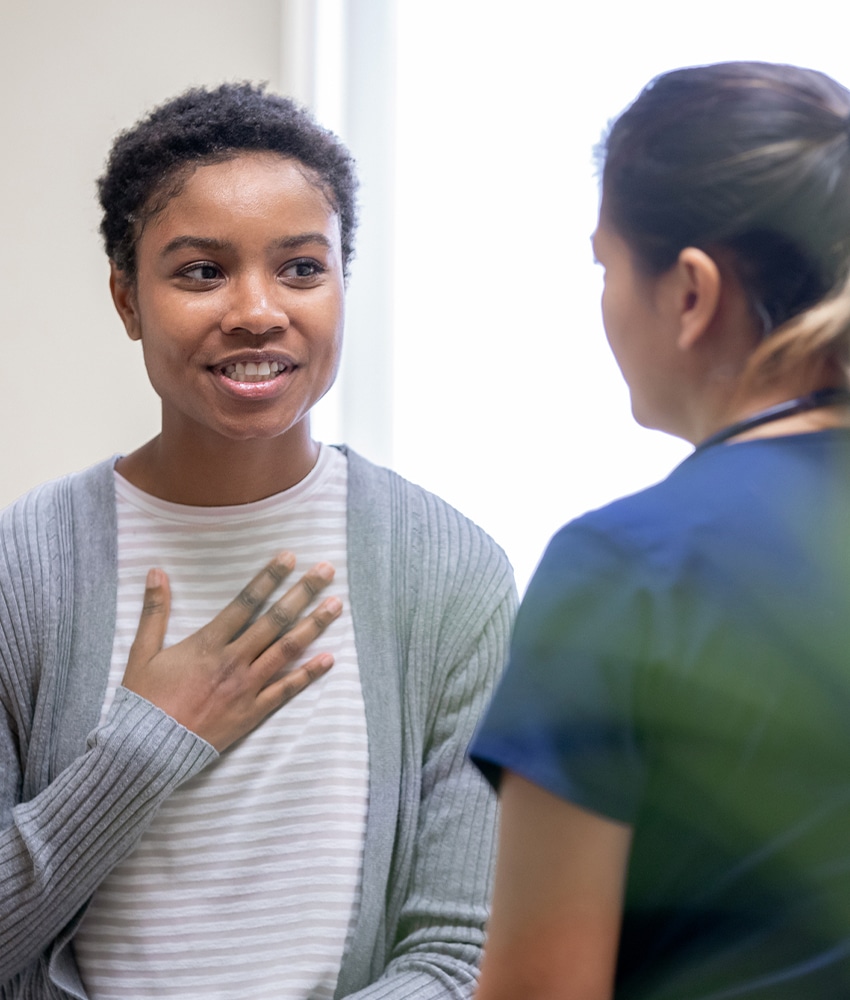Endometriosis
What is Endometriosis?
Endometriosis is a condition in which the type of tissue that forms the lining of the uterus, the endometrium, is found outside the uterus.
Endometriosis occurs in about one in 10 women of reproductive age. It is most often diagnosed in women in their 30s and 40s.
Endometriosis implants respond to changes in estrogen, a female hormone. The implants may grow and bleed like the uterine lining does during the menstrual cycle. Surrounding endometrial tissue can become irritated, inflamed, and swollen. The breakdown and bleeding of this tissue each month also can cause scar tissue, called adhesions, to form. Sometimes adhesions can cause organs to stick together. The bleeding, inflammation and scarring can cause pain, especially before and during menstruation.
Endometriosis can cause pain — sometimes severe — especially during menstrual periods. Fertility problems also may develop. Fortunately, effective treatments are available.
Common signs and symptoms of endometriosis include:
The severity of your pain isn’t necessarily a reliable indicator of the extent of the condition. You could have mild endometriosis with severe pain, or you could have advanced endometriosis with little or no pain.
Endometriosis is sometimes mistaken for other conditions that can cause pelvic pain, such as pelvic inflammatory disease (PID) or ovarian cysts. It may be confused with irritable bowel syndrome (IBS), a condition that causes bouts of diarrhea, constipation, and abdominal cramping. IBS can accompany endometriosis, which can complicate the diagnosis.

Diagnosis of Endometriosis
Our endometriosis specialists employ tried and true diagnostic techniques.
A thorough medical history is an important step in the diagnosis of endometriosis. No body is the same, and it is very common for women to experience the symptoms of endometriosis differently. It is very important to discuss your symptoms in detail with your provider. Here are some important questions that will help guide your initial consultation.
How to treat endometriosis?
There is currently no cure for endometriosis, but its symptoms can be managed. There are treatment options for related pain and infertility for women with endometriosis. Healthcare providers consider several factors when determining the best treatment for endometriosis symptoms, including:
- Your age
- How severe your symptoms are
- How severe endometriosis is for you
- Whether you want children
Not all treatments work well for all women with endometriosis. Also, endometriosis symptoms, such as chronic pelvic pain may return after the treatment is stopped or, in the case of surgery, as more time passes after the procedure. We understand you want quick relief from pain and other symptoms of endometriosis. This condition can cause challenges in your day-to-day activities if it’s left untreated. In many cases, your treatment plan will focus primarily on managing your pain and looking for any risk factors. If you want to get pregnant, the treatment is to improve fertility issues. This can be done through medication (with drugs or medicine), hormone therapy, and surgery.
Medical, surgical, and hormone treatments options are available to help reduce your symptoms and manage any potential complications. Medications are often used to help control the symptoms of endometriosis. These can include pain medications and hormone therapies. Your doctor may first try conservative treatments. They may then recommend surgery if your condition does not improve. Sometimes both medicine and surgery are used. Your surgeon may take an endometrial tissue sample (biopsy) for further testing. Some women also benefit from alternative therapies to relieve pain.
Every woman reacts differently to these treatment options. Our doctor will help with the endometriosis diagnosis and to find the one that works best for you and relieve the pain symptoms.
